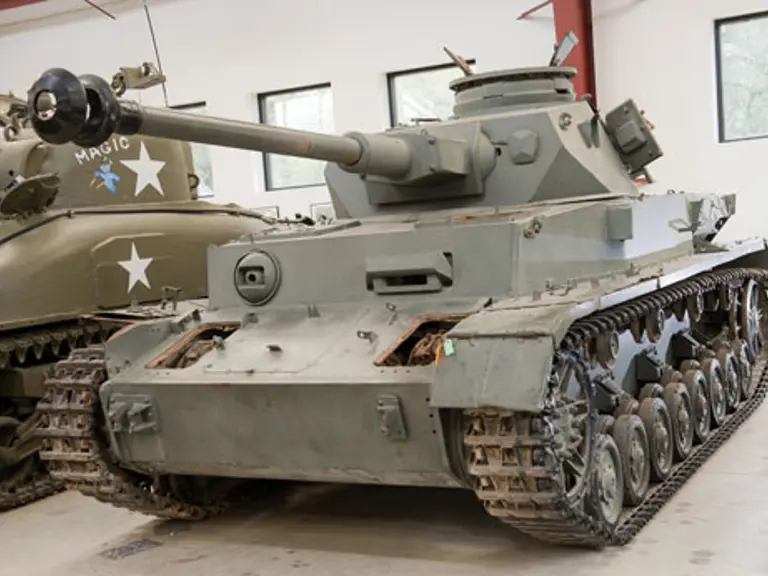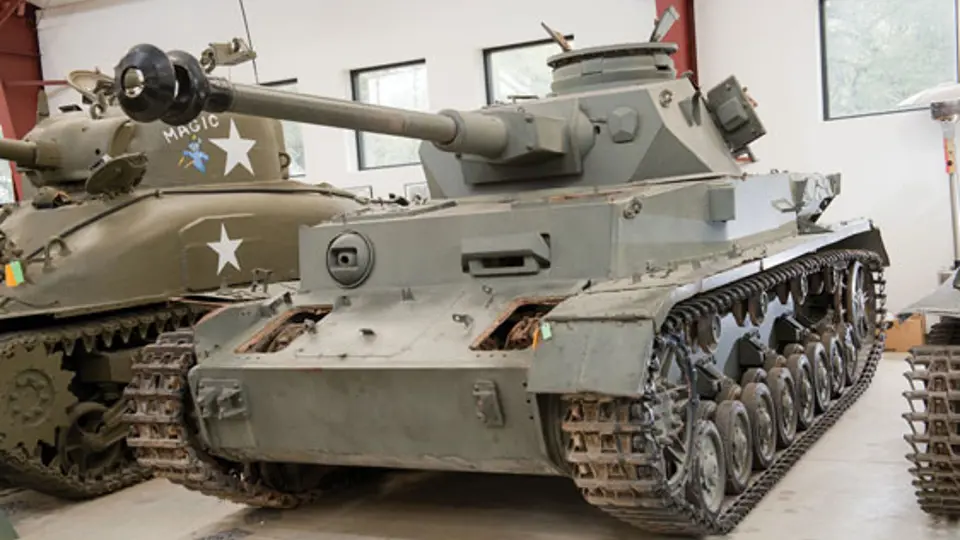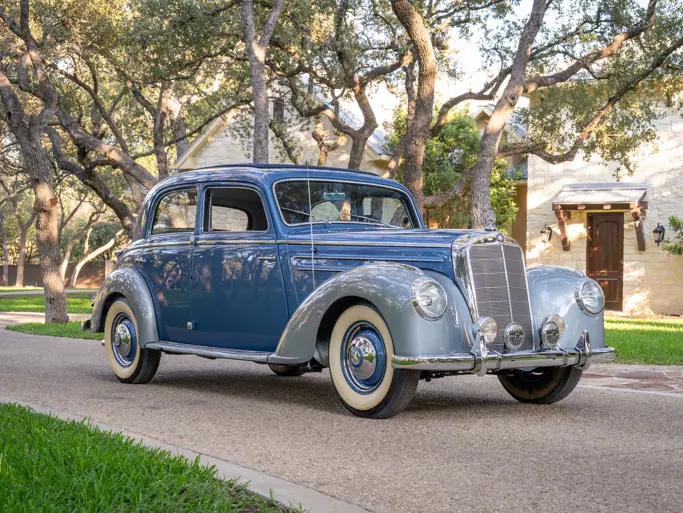 | Portola Valley, California
| Portola Valley, California
Weight: 27.6-tons (25,038-kg)
Length: 23' 0” (7.02-m)
Width: 9' 5” (2.88-m)
Height: 8' 9” (2.68-m)
Crew: 5
Armor:
Hull front: 3.1” (80-mm)
Turret front: 2” (50-mm)
Weapons:
-Primary
1x 7.5-cm KwK 40 L/48 cannon
-Secondary
2x 7.92-mm MG-34 machine guns
-Ammunition
87x 7.5-cm
3,150x 7.92-mm
Engine: 12-cylinder V-12 Maybach HL120TRM, 296-hp
Power/weight: 10.7-hp/ton
Fuel Capacity: 120-USG (145-l)
Range: 120-miles (434-km)
Speed: 26-mph (42-km/h)
The vehicle being offered, Panzerkampfwagen IV Ausf. H, chassis number 89457, was most likely built by Nibelungenwerke in February 1944. This vehicle was bought by Syria in the 1950s, probably from Czechoslovakia. It was captured by the Israelis during the Six Day War in 1967. After its capture, it was used as a training vehicle by the Israeli Army. It was then shipped to the Israeli Armor museum at Latrun in 1994. This tank was obtained from Israel by the MVTF in early 2003. This vehicle is in need of a complete restoration inside and out. The exterior is missing numerous fittings and small hatches. The commander's cupola has been modified by the Syrian Army to mount a heavy anti-aircraft machine gun. Also added by the Syrians were brackets for radio antenna mounts. They are located on either side of the turret and on the right, rear side of the turret. The stowage bins on the right side fenders are non-standard and were apparently added by the Czechs prior to it be sold to Syria. The wheels, drive sprockets and tracks appear to be in serviceable condition. The interior is extensively rusted. All turret hatches are present. The original turret drive motor has been replaced with a hydraulic unit from a Sherman tank. Non-standard main gun ammunition racks are fitted inside the hull. A replica turret bin is included.
The Panzerkampfwagen (Pz.Kpfw.)IV Ausf. H was the eighth variant in the Panzerkampfwagen IV series. When originally designed, the Pz.Kpfw. IV was envisioned as a tank that would support the lighter Pz.Kpfw. III's by using it's low-velocity 7.5-cm cannon in the over watch role, knocking out anti-tank guns and machine gun bunkers. Production of the Pz.Kpfw. Ausf. A began in 1936.
The first six variants in the Pz.Kpfw. IV series were all armed with the short barrel 7.5-cm KwK 37 L/24 cannon. While an effective weapon against bunkers, light vehicles and personnel, its low muzzle velocity prevented it from being a very effective anti-tank weapon when firing standard armor piercing rounds. This was especially true during the German invasion of the Soviet Union in 1941 when the German armored force was shocked by the appearance of the thick skinned KV-I heavy and T-34 medium tanks. These two tanks were all but impervious to the short barreled 7.5-cm gun. By March 1942, a longer, 43-caliber, 7.5-cm cannon was beginning to be installed in the Pz.Kpfw. IV.
Beginning in April 1943, production of the Ausf. H variant started. By the time production of the Ausf. H ended in July 1944, 3,774 had been produced by Krupp, Vomag and Nibelungenwerke. The Ausf. H was the most produced type of Pz.Kpfw. IV. Seeing service on all fronts, the Ausf. H soldiered on with the German panzer forces until the end of the war. Post-war, surviving Pz.Kpfw. IV's were used by Bulgaria, Czechoslovakia, Finland, Spain and Syria. All of the Syrian Pz.Kpfw. IV's came from Czechoslovakia, France and Spain. The last known combat use of the Pz.Kpfw. IV was in the 1967 Six Day War.
Transport Cost to Storage: $3,300





